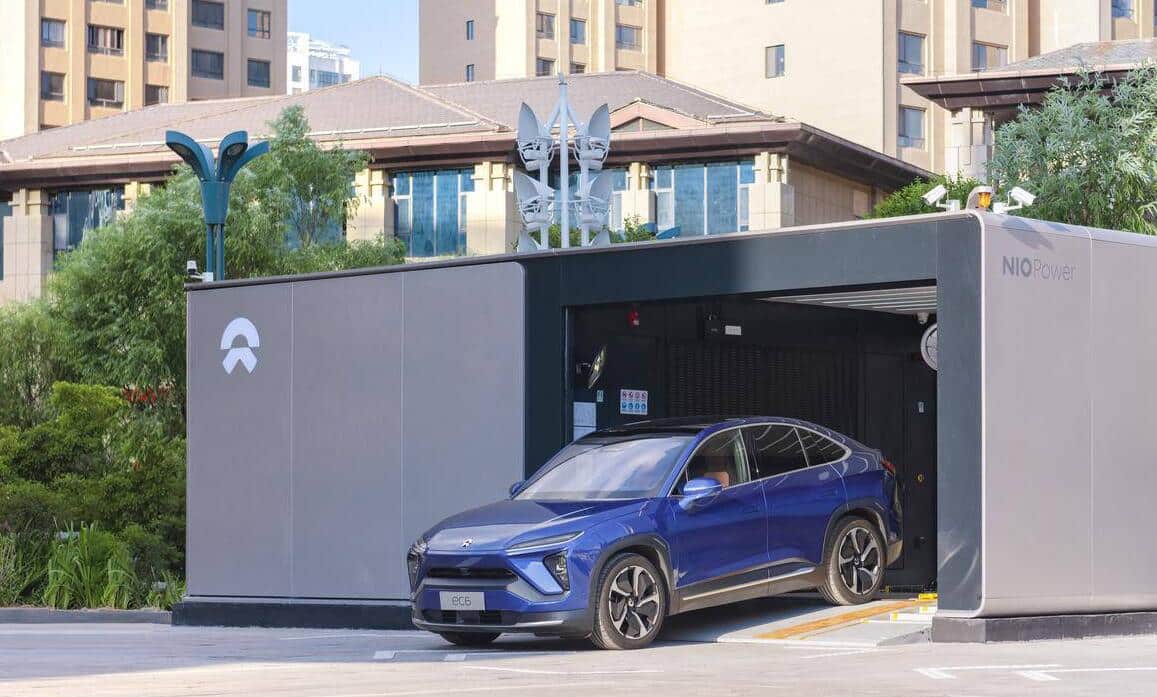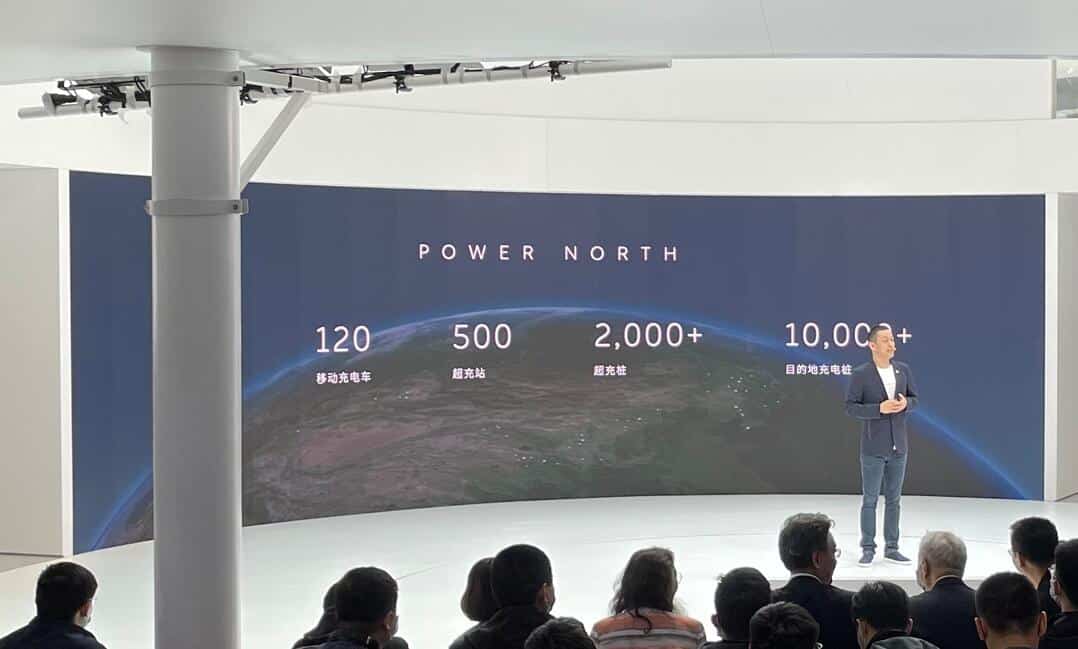One year ago today, Nio unveiled its Power North plan to do what other EV makers are not willing to do to improve the experience for customers in northern China.
(Image credit: Nio)
One year ago today, Nio (NYSE: NIO, HKG: 9866) unveiled Power North, a plan designed to improve the electric vehicle (EV) experience for customers in northern China, on the first day of the Shanghai auto show.
Now that the program is celebrating its first anniversary, Nio has announced its implementation progress.
Between April 19, 2021 and April 18, 2022, Nio added 23 battery swap stations in eight northern provinces of China, bringing the number of facilities in the region to 28, according to data released today by the company.
Nio has added 113 supercharging stations in the region over the past year, including 320 charging piles. To date, Nio has 119 supercharging stations in these provinces, including 348 charging piles.
The company has also added 61 destination charging stations in these provinces, including 238 charging piles. The total number of Nio's destination charging stations here now stands at 67, including 252 charging piles.
In addition to Nio's own replenishment facilities, it has access to more than 8,000 third-party charging posts in these provinces.
The colder temperatures in northern China are a major barrier to local residents choosing EVs, and have made EV companies less willing to expand the coverage of charging facilities there.
Nio's Power North plan is aimed at infrastructure planning and charging incentives in eight northern Chinese provinces, including Heilongjiang, Qinghai, Ningxia, Gansu, Inner Mongolia, Liaoning, Jilin and Xinjiang.
The company said on April 19 last year that it plans to have 100 battery swap stations, 120 mobile charging vehicles, 500 supercharging stations, over 2,000 supercharging piles and over 10,000 destination charging piles in the eight provinces within the next three years.
(William Li, Nio founder, chairman and CEO, announced the Power North plan on April 19, 2021. Image credit: CnEVPost)
By then, there will be an average of one battery swap station or super-charging station for every 100 kilometers of highway in these areas, an average of quality charging facilities for every 3 square kilometers in urban areas, and 95 percent coverage of charging resources in scenic areas above 4A level, Nio said at the time.
Nio said it hopes to enhance the replenishment experience for EV users in these areas by deploying charging infrastructure, including battery swap stations, supercharging stations, destination charging stations, and mobile charging vehicles, and by using third-party facilities.
Until December 31, 2024, all Nio vehicles in these eight regions will be entitled to 1,000 kWh of free charging for the year using Nio's public charging piles, and service fees will remain waived after 1,000 kWh are exceeded.
It is worth noting that since Nio's charging stations are open to other brands, the increased infrastructure in the northern region will also benefit other EV makers.
Between July 1, 2021 and April 18, 2022, 70.5 percent of the power provided by China's charging stations in those eight provinces was used by other brands of EVs, Nio said today.
Nio customers used more than 1.16 million kWh of free electricity during this period, according to the company.
Over the next two years, Nio is continuing to build more charging and battery swap facilities in the eight provinces, and hopes to make charging more convenient than refueling through the efforts of Nio Power and its partners, the company said.
Nio today added two new battery swap stations in China, bringing the total to 902, according to data monitored by CnEVPost.


